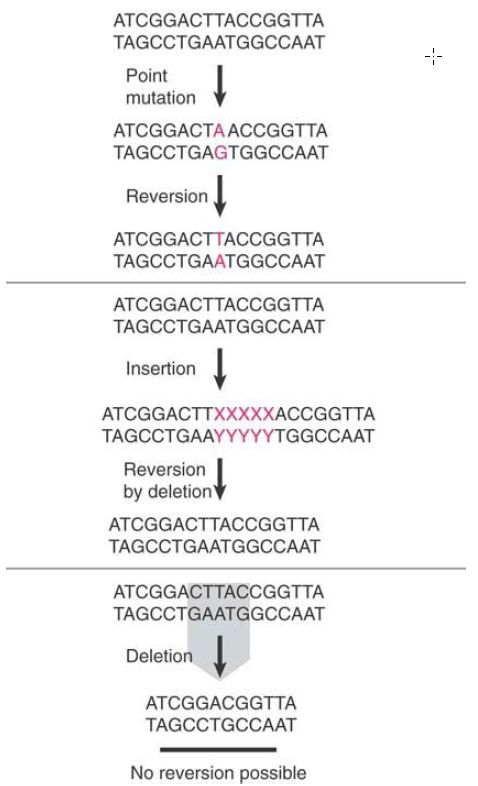

النبات

مواضيع عامة في علم النبات

الجذور - السيقان - الأوراق

النباتات الوعائية واللاوعائية

البذور (مغطاة البذور - عاريات البذور)

الطحالب

النباتات الطبية


الحيوان

مواضيع عامة في علم الحيوان

علم التشريح

التنوع الإحيائي

البايلوجيا الخلوية


الأحياء المجهرية

البكتيريا

الفطريات

الطفيليات

الفايروسات


علم الأمراض

الاورام

الامراض الوراثية

الامراض المناعية

الامراض المدارية

اضطرابات الدورة الدموية

مواضيع عامة في علم الامراض

الحشرات


التقانة الإحيائية

مواضيع عامة في التقانة الإحيائية


التقنية الحيوية المكروبية

التقنية الحيوية والميكروبات

الفعاليات الحيوية

وراثة الاحياء المجهرية

تصنيف الاحياء المجهرية

الاحياء المجهرية في الطبيعة

أيض الاجهاد

التقنية الحيوية والبيئة

التقنية الحيوية والطب

التقنية الحيوية والزراعة

التقنية الحيوية والصناعة

التقنية الحيوية والطاقة

البحار والطحالب الصغيرة

عزل البروتين

هندسة الجينات


التقنية الحياتية النانوية

مفاهيم التقنية الحيوية النانوية

التراكيب النانوية والمجاهر المستخدمة في رؤيتها

تصنيع وتخليق المواد النانوية

تطبيقات التقنية النانوية والحيوية النانوية

الرقائق والمتحسسات الحيوية

المصفوفات المجهرية وحاسوب الدنا

اللقاحات

البيئة والتلوث


علم الأجنة

اعضاء التكاثر وتشكل الاعراس

الاخصاب

التشطر

العصيبة وتشكل الجسيدات

تشكل اللواحق الجنينية

تكون المعيدة وظهور الطبقات الجنينية

مقدمة لعلم الاجنة


الأحياء الجزيئي

مواضيع عامة في الاحياء الجزيئي


علم وظائف الأعضاء


الغدد

مواضيع عامة في الغدد

الغدد الصم و هرموناتها

الجسم تحت السريري

الغدة النخامية

الغدة الكظرية

الغدة التناسلية

الغدة الدرقية والجار الدرقية

الغدة البنكرياسية

الغدة الصنوبرية

مواضيع عامة في علم وظائف الاعضاء

الخلية الحيوانية

الجهاز العصبي

أعضاء الحس

الجهاز العضلي

السوائل الجسمية

الجهاز الدوري والليمف

الجهاز التنفسي

الجهاز الهضمي

الجهاز البولي


المضادات الميكروبية

مواضيع عامة في المضادات الميكروبية

مضادات البكتيريا

مضادات الفطريات

مضادات الطفيليات

مضادات الفايروسات

علم الخلية

الوراثة

الأحياء العامة

المناعة

التحليلات المرضية

الكيمياء الحيوية

مواضيع متنوعة أخرى

الانزيمات
The Effects of Mutations Can Be Reversed
المؤلف:
JOCELYN E. KREBS, ELLIOTT S. GOLDSTEIN and STEPHEN T. KILPATRICK
المصدر:
LEWIN’S GENES XII
الجزء والصفحة:
27-2-2021
2278
The Effects of Mutations Can Be Reversed
KEY CONCEPTS
-Forward mutations alter the function of a gene, and back mutations (or revertants) reverse their effects.
-Insertions can revert by deletion of the inserted material, but deletions cannot revert.
-Suppression occurs when a mutation in a second gene bypasses the effect of mutation in the first gene.

FIGURE 1. Point mutations and insertions can revert, but deletions cannot revert.
-A point mutation can revert either by restoring the original sequence or by gaining a compensatory mutation elsewhere in the gene.
-An insertion can revert by deletion of the inserted sequence.
- A deletion of a sequence cannot revert in the absence of some mechanism to restore the lost sequence.
Mutations that inactivate a gene are called forward mutations. Their effects are reversed by back mutations, which are of two types: true reversions and second-site reversions. An exact reversal of the original mutation is called a true reversion.
Consequently, if an A-T pair has been replaced by a G-C pair, another mutation to restore the A-T pair will exactly regenerate the original sequence. The exact removal of a transposable element following its insertion is another example of a true reversion. The second type of back mutation, second-site reversion, can occur elsewhere in the gene, and its effects compensate for the first mutation. For example, one amino acid change in a protein can abolish gene function, but a second alteration can compensate for the first and restore protein activity.
A forward mutation results from any change that alters the function of a gene product, whereas a back mutation must restore the original function to the altered gene product. The possibilities for back mutations are thus much more restricted than those for forward mutations. The rate of back mutations is correspondingly lower than that of forward mutations, typically by a factor of about 10.
Mutations in other genes can also occur to circumvent the effects of mutation in the original gene. This is called a suppression mutation. A locus in which a mutation suppresses the effect of a mutation in another unlinked locus is called a suppressor. For example, a point mutation might cause an amino acid substitution in a polypeptide, whereas a second mutation in a tRNA gene might cause it to recognize the mutated codon, and as a result insert the original amino acid during translation. (Note that this suppresses the original mutation but causes errors during translation of other mRNAs.)
 الاكثر قراءة في مواضيع عامة في الاحياء الجزيئي
الاكثر قراءة في مواضيع عامة في الاحياء الجزيئي
 اخر الاخبار
اخر الاخبار
اخبار العتبة العباسية المقدسة

الآخبار الصحية















 قسم الشؤون الفكرية يصدر كتاباً يوثق تاريخ السدانة في العتبة العباسية المقدسة
قسم الشؤون الفكرية يصدر كتاباً يوثق تاريخ السدانة في العتبة العباسية المقدسة "المهمة".. إصدار قصصي يوثّق القصص الفائزة في مسابقة فتوى الدفاع المقدسة للقصة القصيرة
"المهمة".. إصدار قصصي يوثّق القصص الفائزة في مسابقة فتوى الدفاع المقدسة للقصة القصيرة (نوافذ).. إصدار أدبي يوثق القصص الفائزة في مسابقة الإمام العسكري (عليه السلام)
(نوافذ).. إصدار أدبي يوثق القصص الفائزة في مسابقة الإمام العسكري (عليه السلام)


















